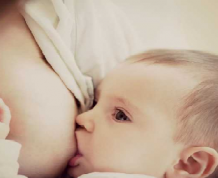How do you pinpoint the exact day of ovulation? You may be wishing that you had paid closer attention in your middle school health classes to the reproductive cycle and the whole science behind it because as you’re probably discovering, it’s really important to understand exactly how your body is working so that you can increase your chances of getting pregnant quickly. Claim Your 20 Free Pregnancy Tests – Click Here
Well, have no fear. I want to talk to you today about ovulation and help sort of break that down for you and help it make sense so that you understand what’s going on with your body and what are the really key things that you need to know.

So, first and foremost, what is ovulation? Well, ovulation is the time during your monthly cycle when you release a mature egg from your ovary. Women are born with all the eggs they will ever have, somewhere in the neighborhood of 1-2 million. By puberty, you will already be down to about 400,000 – and during your reproductive years, you will lose an estimated 1,000 per month. Only one will be released each month to be fertilized, and it goes down through your fallopian tube and comes into the uterus. The uterus has been waiting for this mature egg to come and has been very busy and has created a very nurturing environment in the event that this egg gets fertilized (meaning that sperm meets it).

So, the uterine lining has been thickened and it’s just there and waiting. So when the egg comes down, it has got a great habitat in which to wait and see if it will become fertilized. If it does not become fertilized after a period of time, the egg does disintegrate in the uterine lining as well as some additional blood is shed. That’s your period. That’s what’s happening every month.

Let’s break down your cycle into two key phases. There are two main phases you need to be aware of. The first is called the follicular phase. This starts on the first day of your period. It’s important to know that whenever we talk about your menstrual cycle, your menstrual cycle begins on the day your period begins and ends right before your period begins again essentially, however long that might be for you. This is called your average cycle length. Most women have an average cycle length of 28 days, but this can vary from 22-41 days on the long & short end of it.
So the follicular phase, this is just a period of time. It goes from the first day of the period until the day you ovulate. It’s basically when the egg that’s going to be released is maturing and getting ready for that process, so being called the follicular phase.

The second half of the phase is called the luteal phase. It begins the day your egg is released from the ovary, goes down the fallopian tube and this phase of the cycle, there’s less variation from woman to woman as opposed to the follicular phase where there can be a wide variation in time.
You can be pretty sure that from the day the luteal phase starts, from the day you ovulate until the day your menstrual cycle begins again, that is typically a range of 12 to 16 days. So there is still a range in there but you can be sure of that. If your luteal phase is shorter than 12 days, again that being the day you ovulate until the day your next cycle begins, your luteal phase is probably considered too short to sustain a pregnancy. And if your luteal phase is longer than the norm, then you have a greater chance of miscarrying should you fall pregnant. So making sure your luteal phase is in the neighborhood of 12-16 days or so is key to conception.

So as you’re trying to figure out when you’re ovulating, you can count back that far and get that window. Go to when your next cycle begins, and count back 12-16 days to find the window. That’s a more sure thing as opposed to the follicular phase which can really vary widely as to how long that phase lasts from woman to woman. But whether your cycle tends to be 20 days, 28 days or even 40 days, you can be sure that you’re ovulating roughly 12 to 16 days before your next cycle begins. So I hope that helps. There are many other foolproof ways to determine when exactly you ovulate, by taking ovulation predictor kits (OPKs), charting your basal body temperatures, or by using an ovulation monitor. You can also use this free ovulation calculator to further help you pinpoint your fertile window.
There are a few other key things that you need to know about ovulation particularly if you’re trying to get pregnant. First, knowing when you ovulate is so important because the egg only lives on its own for 12 to 24 hours without being fertilized. If it hasn’t been fertilized by that time, it’s over. So you really have to know when that’s happening. You have to be able to pinpoint that. Get 20 Free Ovulation Tests – Exclusive Bonus Gift.

Exactly when your body decides to ovulate really can be affected by things like stress, by illness or by other things that are really outside the norm for your life, so crazy things that might be happening. They can affect when your body has its hormone surge and releases that egg.
So – and I know this is easier said than done, but if you’re trying to conceive, try your best to stay calm, cool and collected and to stay healthy overall. So get that vitamin C. Get plenty of rest. Eat your veggies, all those great things, to help keep your body and your hormones stay on a nice even keel.
So I hope that helps you out to understand the basics of ovulation and next time, we’re going to be talking about how to determine those menstrual days and a strategy. See you then.









Comments